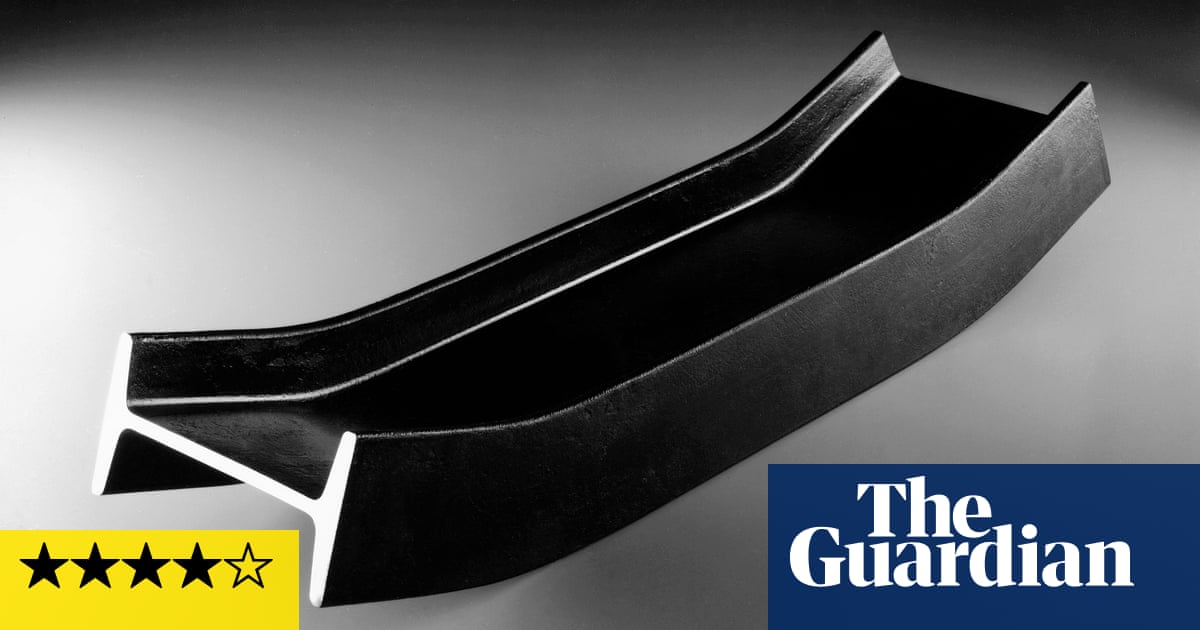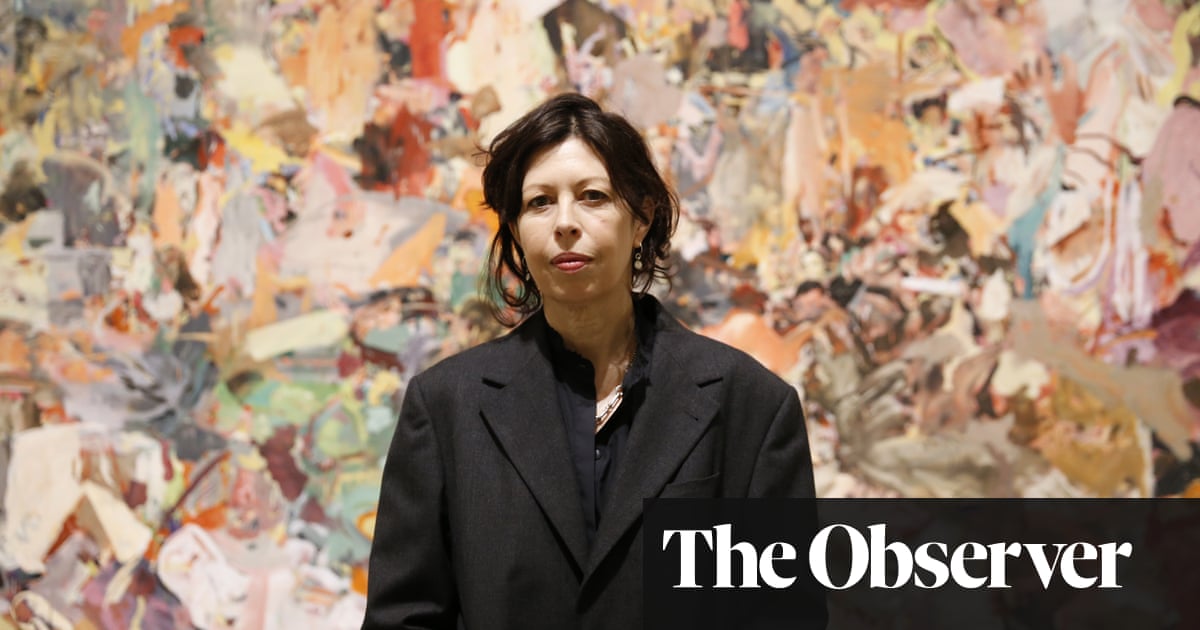
Shortly before the maverick Italian designer Enzo Mari died in 2020, he donated his archive to the city of Milan with one condition: it must remain closed for the next 40 years. It would take at least that long, Mari argued, “before we have a new generation that is not as spoilt as today’s generation and that will be capable of using it in an informed manner”.
Those who don’t want to wait four decades should hightail it to the Design Museum in London, where a sprawling retrospective of Mari’s work is on show – perhaps for the last time in a generation or two. It is a fascinating and infuriating portrait of this self-styled contrarian, a fiery prophet of doom who carved out a career of contradictions. Mari was a lifelong Marxist who railed against the indulgent “pornography” of the design world, arguing tirelessly for workers’ rights and the democratisation of design. He was hailed as the “conscience” of the industry; the grumpy thorn in the side of the establishment who could be relied upon to hurl colourful insults at his contemporaries (“publicity whores!”), between puffs on his cigars.
Yet his lasting legacy is not to be found in affordable mass-produced homewares for the common man, but expensive limited edition objects sold in exclusive boutiques. His best-known design – an interlocking children’s puzzle of 16 animals cut in one continuous line from a single piece of oak – is found less in the grubby hands of toddlers than on the carefully curated desks of design aficionados. You can buy it in the Design Museum shop for £340.
In the 1980s Mari curated a collection of sickles and scythes from around the world, recreated in this exhibition, which he saw as archetypes of honest, functional design, honed by the collective knowledge of blacksmiths and farmers. His own contribution? A limited edition art multiple of a scythe, one of which recently sold for £14,500. This is communism as collectible, certificate of authenticity included.
So how did Mari reconcile railing against consumerism on the one hand, and filling the world with yet more products on the other? Born in Novara, northern Italy, in 1932, he didn’t have an easy start. Mari dropped out of school when his father became ill, and spent several years doing odd jobs as a bricklayer, sign painter, soap salesman and market porter. He eventually enrolled at the Brera Academy of fine arts in Milan, moving from painting to sculpture to stage design, his successive teachers each suggesting he pursue a different avenue. “I asked too many questions,” he said, “and was never happy with the answers.” Later, he admitted he was thankful that he was never “castrated” by a design school.
The jumbled variety of Mari’s college years is reflected in the breadth of his prolific output, which saw him create more than 2,000 works during his 60-year career. This chronological exhibition (first shown at the Milan Triennale in 2020) jumps from sculptural op art experiments, to children’s books, injection-moulded vases, political manifestos, daybeds, DIY manuals and porcelain bowls.
Whichever realm he tackled, his approach was always governed by the principle that he would only intervene where strictly necessary. “I suggest looking outside the window,” he once said. “If you like what you see, there’s no reason for new projects. If, on the other hand, there are things that fill you with horror to the point of making you want to kill those responsible, then there are good reasons for your project.”
It is unclear whether Mari wanted to kill children’s book authors and toy makers, but his early designs in this area reveal a keen eye for form. The interlocking wooden puzzle, 16 Animali, is a wonderfully elegant thing, a menagerie of cartoonish creatures’ silhouettes ingeniously nested together. The preliminary sketches for his Nature Series of animal posters reveal his precise process of paring back the animals to their bare recognisable essentials, something he learned from his days of sign-painting.
“Each time I would attempt to figure out what was essential,” he said in later life. “This search for what is essential is my first thought when designing.” The print series turned into a pair of picture books, the simple forms intended as a way of drawing children’s attention to shapes, against the distraction of television.
Inspired by the essential building blocks of modernity, Mari’s early product designs often took the form of laconic “as found” objects, like his Putrella fruit bowl – a simple chunk of steel I-beam, slightly bent up at each end to stop the fruit rolling out (yours for £580). In a similar vein, he created a range of trays and dishes made of raw plate steel, crudely welded together, the primitive finish intended to show the hand of the labourer, turning the imperfections into a decorative quality.
The production process was always front and centre. For the second iteration of his Java food container in the 1960s, he simplified the joint of the lid, removing the need for a connecting pin, which was applied by hand, thereby easing the burden of repetitive gestures on production line workers.
Such a worker-minded design approach didn’t always go according to plan. When Mari was commissioned to produce a porcelain collection in the 1970s, he decided to liberate the artisans and give them licence to invent their own designs. He encouraged them to use ancient pottery and basketry techniques, and created some template designs of coiled, woven and layered strips and circles of clay, to give them inspiration. But his hope of unleashing a William Morris utopia of creative craftspeople, unshackled from top-down instructions, fell flat: left to their own devices, the workers painstakingly replicated Mari’s examples instead.
The designer’s one brief foray into the realm of affordable furniture didn’t quite work out either. In 1971 he designed a steel-framed sofa-bed for manufacturer Driade, with a cylindrical polyurethane backrest that could simply be rotated out of the way to turn it into a bed. It was affordable, multifunctional and well promoted, but it proved a commercial failure. “I was greatly depressed,” said Mari. “The public to whom this type of project was addressed refused it because they did not recognise it as part of the cultural system.” He thought the main reason for the failure was that “it cost too little”. It didn’t occur to him that people might have found his clumsy contraption neither comfortable nor beautiful.
Spurred on by this failure, Mari decided the only solution was to put the means of production directly in the hands of the people themselves. In 1974, he embarked on his most famous project, a proposal for “autoprogettazione”, or self-design, to empower people to make furniture themselves. He developed a series of chairs, tables, beds and shelving units that could be knocked together from simple planks of pine with a hammer and nails, stating that he would send the manual to anyone who wrote to him, for just the cost of postage. Beautiful little models of the furniture are lined up in the exhibition, alongside the original instructions and correspondence.
The pieces were intentionally crude and ascetic in their bodged simplicity, embodying a kind of anarchic punk spirit and, once again, the idea was that people should use his designs as a starting point to create their own variants. Mari encouraged people to write back to him explaining what they had made, joining the collective fight against “the rampant consumption of luxury furniture”. The project garnered coverage around the world and Mari received more than 5,000 letters. But, as usual, he was nonplussed by the response. “In 99% of cases,” he said, “it was not understood or misunderstood.” He was particularly disgusted by one American fan, who had commissioned others to make the whole range of Mari’s delightfully “rustic” furniture for his chalet in Aspen, reducing the radical experiment to cutesy kitsch.
Still, it seems like success – commercial or otherwise – was never Mari’s intention. “When I design an object,” he once told an interviewer, “and people say, ‘Oh, well done!’, I unfailingly ask myself, ‘Where did I go wrong?’ If everybody likes it, it means I have confirmed the existing reality and this is precisely what I don’t want.”
He would no doubt be furious if anyone enjoyed this exhibition. We clearly all missed the point.
Enzo Mari is at the Design Museum, London, 29 March to 8 September












